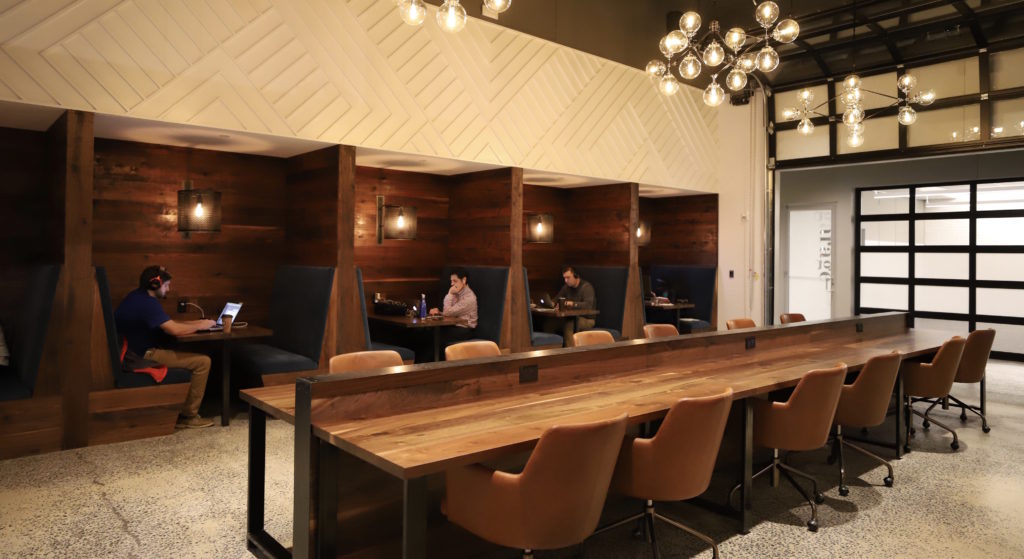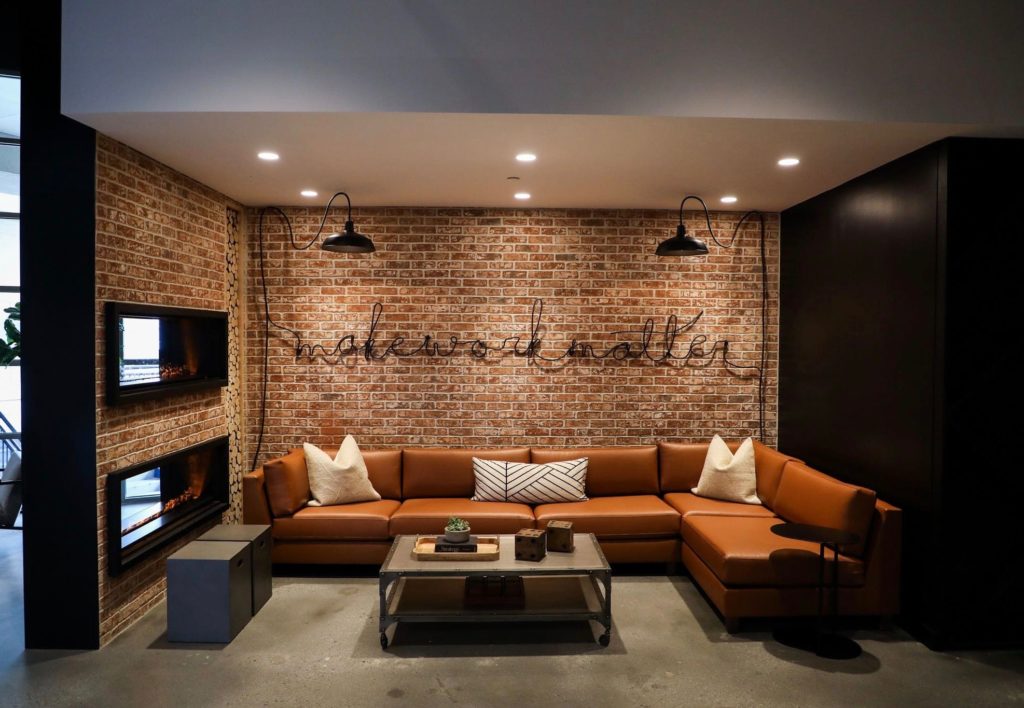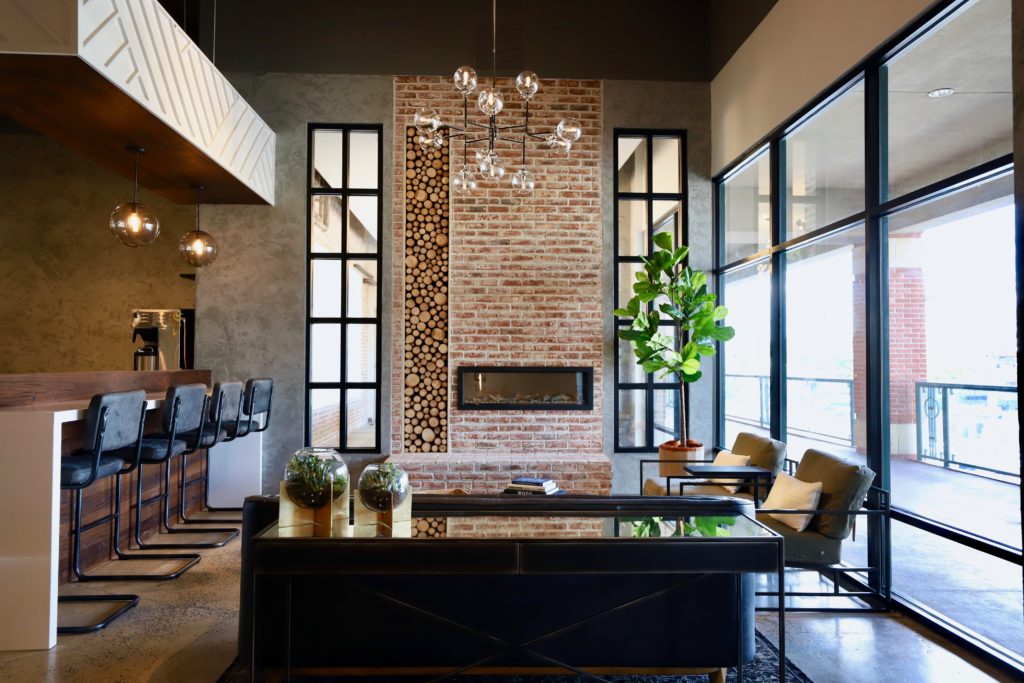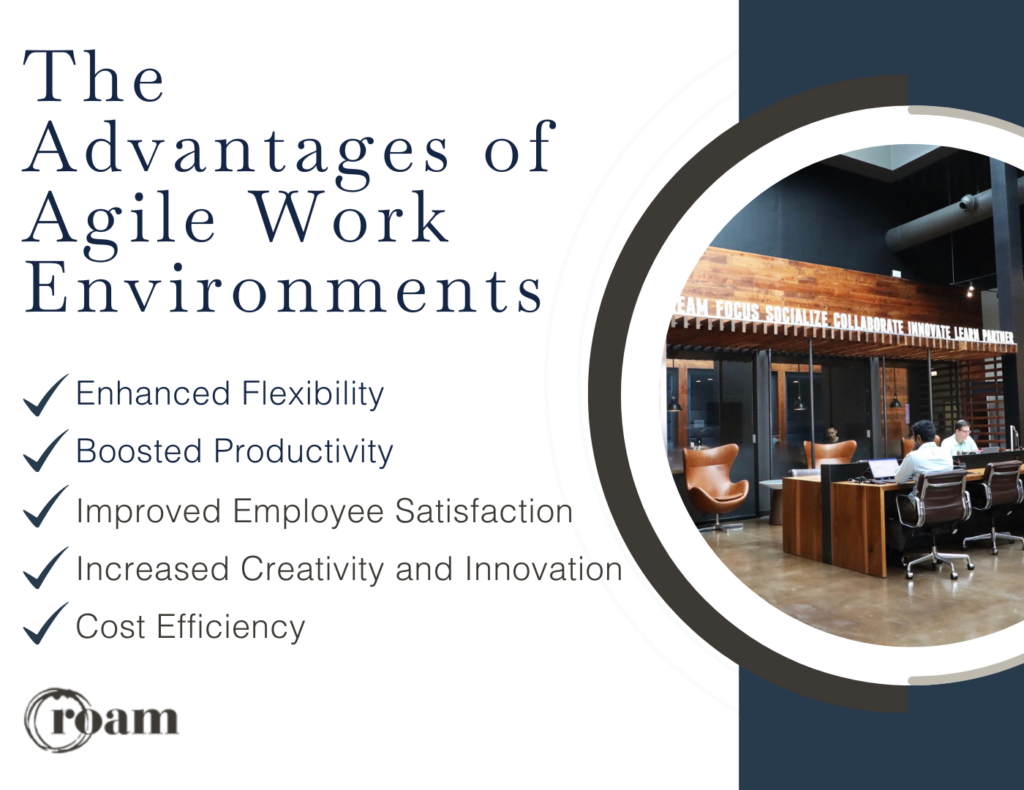Agile Work Environments: Transforming How We Work for Efficiency and Flexibility

In the fast-paced, ever-changing world of business, adaptability and efficiency are critical keys to staying ahead. A front-runner of modern business strategy is the concept of an Agile Work Environment. But what does ‘Agile’ mean in the context of workspace design, and why is it gaining so much attention these days?
What is an Agile Work Environment
An Agile Work Environment can be defined as a workplace designed to maximize flexibility, empowering employees with a variety of working options, and enabling them to decide how, where, and when they work best. This concept grew from the agile methodology, an approach originally developed for project management in the software development industry to address changing customer requirements. Agility in a work environment essentially means fluidity and adaptability to change, premised on the understanding that one size does not fit all when it comes to where and how individuals work.
Agile workplaces are designed with an array of spaces to cater to varying work and task requirements. This could encompass quiet zones for those in deep concentration, breakout spaces for dynamic brainstorming sessions, communal tables for collaborative work, comfortable lounge areas for relaxed conversations, and even hot-desking workstations for quick or individual tasks. Findings from several studies advocate that offices designed on agile principles not only improve efficiency but also foster a more engaging, innovative, and comfortable atmosphere for employees to work in.
The dynamics of agile workspace acknowledge and embrace the fact that work is an activity, not a fixed location. This forward-thinking environment is driven by the transition from singular, static workstation practices to more flexible, shared, and activity-based working. With an agile approach, individuals aren’t tied to one desk or one office but have the freedom to roam, find their corner, and achieve their best work.
Key Features of Agile Workplaces
Diving deeper into the Agile work environment, we have to appreciate the unique characteristics that make it stand out from traditional office settings. From promoting flexibility in work location and timing to doing away with the concept of fixed desks, agile workplaces embody a sense of freedom that traditional, static workplaces have long overlooked.
Hot Desking

An integral facet of an Agile work environment is the concept of ‘hot-desking.’ This eliminates the concept of assigned seating and allows individuals to choose from available workstations each day. This fosters an agile culture that integrates a strong sense of adaptability, community, and knowledge-sharing among team members.
Work Zones

Outside of the hot-desking arena, Agile workplaces offer a variety of settings based on the type of work being done. To ensure a conducive work environment, areas such as breakout spaces, meeting rooms, quiet zones, collaboration areas, and dining and lounge tables are specially designed for specific needs. For instance, breakout areas provide an innovative environment for brainstorming sessions and collaborative assignments. Quiet zones, on the other hand, create a thoughtful space for focused, individual work.
Flexibility

Another defining characteristic of Agile workplaces is flexibility. With no constraints on work hours or location within the office, employees have the liberty to schedule their work according to their most productive hours. Whether you need to attend an early morning meeting or buckle down for the afternoon’s top priorities, an Agile workspace acknowledges and respects personal productivity rhythms.
Advantages of Agile Working

Starting from an employee’s perspective, the freedom of choice in an Agile workplace allows workers greater autonomy to accomplish the tasks at hand effectively. This flexible environment empowers individuals to work in a way that best suits their working style, fostering a positive company culture and seamless communication. Agile environments also offer more opportunities for collaboration and creativity, which could ignite team spirit and breed innovation. It offers a unique approach to achieving a blend of individual and collaborative work, creating the ideal balance necessary for both productivity and work satisfaction.
For employers, a more Agile way of working provides an attractive proposition. By fostering a positive working environment, businesses can attract and retain the best talent. Furthermore, better space utilization means businesses can reduce the amount of office space required, leading to cost savings. Moreover, an Agile working environment can adapt to rapid shifts in business needs, allowing for customer needs to be more swiftly addressed.
Implementing an Agile workplace isn’t just about physically reorganizing the office space. It stretches beyond the tangible and ventures into changing how organizations operate, work, and think. By embracing Agile principles, organizations establish that their focus is on employee experience – meaning their satisfaction, their work-life balance, and their productivity.
Implementing Agile Workspaces: Overcoming Challenges
Transitioning from a traditional work environment to an Agile one presents its fair share of challenges. It’s important to be aware of these pitfalls and have a solid foundation for overcoming them to successfully implement Agile workspaces. By diving headfirst into making the physical changes without considering the implications, organizations can easily come aground.
One of the biggest challenges that businesses encounter when transitioning to Agile working methodologies is the change in mindset it requires. Shifting from the old ways of working to new agile values needs a substantial amount of change on all levels of the organization. It’s not just about changing the office layout, but a transformation in the way of thinking collectively.
Staff buy-in is another key aspect that companies stumble upon. Employees sometimes are resistant to change, especially if they are comfortable with their current work setup. To overcome this, an open, transparent dialog about the changes being made and how they will ultimately benefit them can help alleviate some of their concerns. Besides, engaging employees in the planning of new workspaces can generate a sense of ownership and acceptance of the new changes.
Initial hurdles aside, there exist a variety of ways to overcome these challenges. A change management plan can help companies ease employees into Agile work environments. Training and Workshops on Agile methodology and practices can help inculcate an Agile mindset in the workforce. Scheduling team meetings regularly to discuss the implementation and answer questions can steer the organization toward a transparent and smooth transition.
Synchronization between physical space changes and behavioral changes is vital in driving the implementation successfully.
Agile Workplaces at Roam

Agile Work Environments are transforming the way we view traditional office spaces. They embody more than just a shift in furniture and spatial planning but represent a shift in mentality towards more adaptable workflows and a whole new method of project management. Agile working situations aim to create optimized workspaces where efficiency and creativity flourish, paving the way for the future of work.
At Roam, our workspaces have embraced this agile transformation, setting the stage for a more engaged, empowered workforce, effective project management processes, and a workplace that adapts to change at the same pace as the market itself.
We provide versatile, affordable, and efficient workspaces that align perfectly with the principles of agility. With our coworking spaces, we are not just offering office space. We are providing a platform for greater work-life balance, enhanced productivity, and invaluable agility. Our goal is to align with the concepts of Agile Work Environments and create spaces that are equipped for enhancing the performance of Agile teams.
From hot-desking options to customizable meeting room spaces, our office solutions encourage transparency, collaboration, and continuous learning — the cornerstones of agile practices. At Roam, we take the heavy lifting off your hands, allowing your organization to focus on what matters most: optimizing your agile operating model, meeting customer needs, and ultimately, growing your business.
Alongside our coworking spaces, Roam offers specialized workplace consulting that emphasizes creating efficient, flexible office designs tailored to modern business needs. Our approach focuses on maximizing your real estate’s potential, ensuring that your workspace is not only adaptable but also conducive to the changing needs of your team and business dynamics. With Roam’s expertise, your office transforms into a dynamic environment that supports productivity, fosters innovation, and encourages collaboration. We’re committed to helping you create a space that not only meets today’s standards but is also prepared for the future, ensuring your team can thrive in an ever-evolving work landscape. Let Roam be your partner in crafting a workspace that truly reflects the agility and resilience of your business.
Agile Work Environments: The Future of Work
Stepping into the future of work means embracing Agile workspaces as more than just a trend. If you’re looking to optimize your company’s workspace to mirror the benefits of an Agile environment, Roam is eager to guide you through that transformation. Together, we can redefine the way you work!
